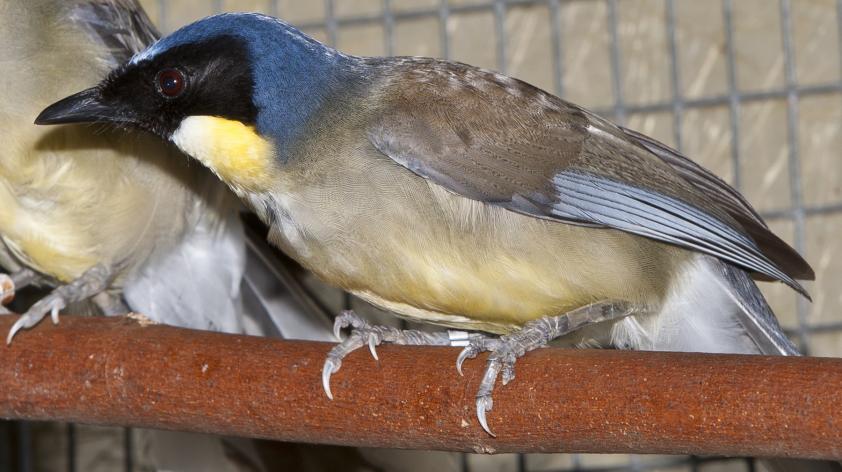
No Laughing Matter
It was not the expected or hoped for diagnosis in a young, critically endangered bird.
The blue-crowned laughingthrush (Garrulax courtoisi) male was only a year and a half old and had presented to the zoo’s hospital with a swollen belly. Otherwise bright and alert, the bird was radiographed and ultrasounded revealing an enlarged liver. As one of the veterinary pathologists in Disease Investigations, I was now examining an impression smear of a liver biopsy obtained by the clinical veterinarians.
Unfortunately, through the microscope, the majority of cells were not liver cells. Instead, they were large round cells with features of lymphoblasts, an immature type of white blood cell.
This finding in a laughingthrush suggested one of two possibilities: lymphoma (cancer) or a systemic Isospora (Atoxoplasma) sp. infection. Interestingly, these diagnoses are not mutually exclusive, and when the bird was euthanized two weeks later due to its poor prognosis, both conditions were confirmed.
Blue-crowned laughingthrushes are native to China, and captive breeding programs around the world, including at the San Diego Zoo, are attempting to boost the numbers of these rare birds.
One obstacle has been their susceptibility to systemic isosporosis (formerly atoxoplasmosis), a type of protozoal parasite infection that affects the intestine and circulating white blood cells, resulting in inflammation and proliferation of lymphocytes in tissues. Though not identified in the biopsy sample, examination of necropsy samples from this bird ultimately revealed this parasite in multiple tissues. The presence of Isosporasp. was confirmed by PCR testing.
So why the concurrent aggressive lymphoma, which not only affected the liver, but also the spleen, kidney, intestine and other sites? It is theorized that chronic inflammation and lymphoid proliferation due to isosporosis can sometimes lead to neoplastic transformation in birds. Whether or not this was the case in this laughingthrush, there is more work to be done on characterizing the types and sources of Isosporasp. infecting songbirds so that this disease is no longer an obstacle to the conservation of this species.
For more information on San Diego Zoo’s Isospora project and blue-crowned laughingthrushes, click here.













